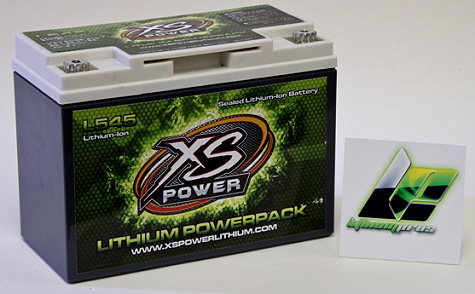Technology Report: Lithium-ion Batteries
The Future of Batteries Has Finally Arrived
Anyone who has ever plugged a cell phone into a charger is already familiar with lithium-ion batteries. Known for their reliable use and fairly quick charge times, lithium-ion has been the go-to power source for consumer electronics for years (laptops, tablets, phones) but of late it appears the technology is finally finding its way into our ATV and UTVs. No need to fear change in this instance, however, as the pros far outweigh the cons.

The lead-acid battery that we’ve counted on for years to supply the voltage to turn our starters and power our lighting is ancient technology; older even than the automobile itself and the materials for better battery designs have been around for a long time too. So why, then, if better batteries existed have we stuck with heavy lead acid units all these years? The answer is cost.
As with any new technology, it takes many years of steady sales numbers to finally turn a profit on initial materials and manufacturing cost. We can thank the world’s reliance on electronics (and thus lithium-ion battery production) for finally driving the cost down enough to make use in powersports practical; after all, as good as Lithium-ion batteries are, it would be tough to convince any consumer to forgo the $79 OEM replacement battery in favor of a $499 one.

These days the gap in cost between lead acid and lithium is nearly nonexistent. Shorai, for example, offers a lithium ATV battery that costs $89 in lead-acid form for only $96.99. If given our druthers, we’d be all over the Lithium-ion variation and here’s why:
Weight
By design, a lithium-ion battery will be lighter than a lead-acid one. In an industry where we’ve witnessed individuals drill holes through their machine’s frame members to shave grams, switching to a battery that can actually be pounds lighter is pretty significant.
Cranking Power
An identical sized lithium battery will always offer higher, more consistent output (especially higher cold cranking amps, or CCAs) than lead-acid.
Cycles
Life expectancy (number of recharge cycles) is significantly greater for lithium over lead. In fact, early adopters have reported having to replace lithium batteries as much as half as often. This was a push when said batteries cost twice as much as a conventional lead-acid battery but an absolute no-brainer now that they are nearly the same price.
Temperature Range
Believe it or not, some lithium ion batteries are designed to crank just as well in -30 degrees as they are a warm summer afternoon thanks to the fact that they cannot freeze or boil.
Materials
Lead and acid are two materials best kept away from human contact. Regardless of how careful we are in handling, the risk of exposure to battery acid on our old batteries ranked up there with inevitable. Lithium does away with any such concerns.
So then it’s settled, right? No reason to ever consider using anything but lithium-ion batteries from this moment forward? Not so fast. There are a few detractors to report. The first of which is charging considerations. Sadly, our automotive chargers designed to pump life into the ol box of acid aren’t optimal for charging up a lithium-ion battery. As such, picking up the correct charger can add to the initial investment cost. According to the companies we’ve spoken to, chargers are pretty reasonable ($85 for Shorai’s, $80 for Skyrich’s, $50 for Alien Motion’s). The good news is it appears a “smart” lithium charger does not have to be brand specific, so picking one up will likely work on a variety of batteries. Additionally, not all lithium-ion batteries require a “smart” charger, so do some research before purchase. Shorai says they recommend using one for maximum life and performance from their batteries but also state that the occasional recharge from a standard lead-acid unit will work as well. EarthX that has a balance point charging system built in already. Don’t be afraid to ask questions when deciding which brand is best for you.

Secondly, we know a lot of ATV & UTV enthusiasts who will only run OEM replacement parts and insist on returning to the original dealer for any and all service and maintenance. There is certainly nothing wrong with this; but at present we are not aware of any of the OEMs having made the switch to lithium-ion just yet. Again though, this has been a cost consideration more than a performance one. We expect within the next model-year or two to witness their switch as well.
Conclusion
It’s pretty safe to say we’re impressed with what lithium-ion batteries will bring to our sport. We’ve done our best to generalize the benefits and disadvantages throughout this article but perhaps the best proof comes from talking to users. We’ve had the opportunity to witness some of these batteries in action and claims of weight shavings of 10lbs over the stock battery, 8-years of continual use, chargings from dead to 90% in 6 minutes, cold cranking in double digit BELOW ZERO temps and lithium based booster packs strong enough to jump-start your pickup but can then be used to power your iPhone are all true. We’ve seen the future and it is now.


